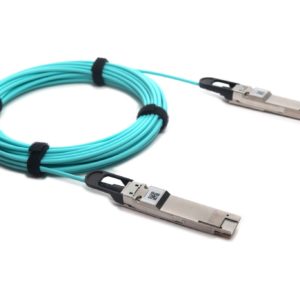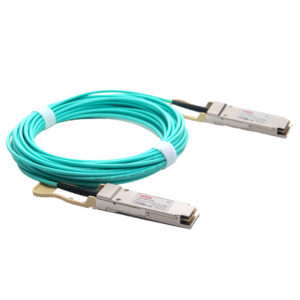Latency defined
Simply put, latency is the time it takes for a signal to travel from point A to point B.
For optical transceivers, latency is measured from the transmitter input to the receiver output. Lower latency equates to greater speed of communication. In a fiber optic network, many factors contribute to latency or to how long it takes to transmit data or information.
Why is transceiver latency important?
Latency is an important consideration in designing optical networks. It is particularly important in certain applications like super-computing, gaming and financial trading applications and a key spec in designing fiber optic networks. A time delay in processing information or displaying relevant information, however minute, when it comes to financial trades, can affect judgment, decision-making, and accuracy.
Latency is the one of the few variables that can be optimized since fiber path delay is fixed. Low latency interconnects are an integral part of InfiniBand architecture, a technology that accelerates applications like High Performance Computing. (HPC)
Speed of light and latency
The speed of light in free space is about 3e8 m/s. That means when light travels 1km, there is a latency or time delay of 3.34 microseconds (µs).
Light traveling through optical fiber moves more slowly than in free space. For a single mode optical fiber with a refractive index of 1.4682, latency is about 5 nanoseconds per meter, or 4.9 microseconds per kilometer.
For your reference: a nanosecond is roughly one billionth of a second or 10 to the -9 power.
More Mathematics
While it may be less of a consideration for tasks involving sustained transfer of data, in high-performance computing applications, super computers or neural networks, when calculating latency consider the fact that latencies add up. When you have many transactional data queries, you need to calculate not just the latency of your switch or your network interface but also that of your pluggable. Those combined latencies affect the speed with which you can expect a response to a query. A 100 nanosecond latency can quickly become 150ns.
Latency is additive.

Factors Affecting Latency: Cable Construction and Design
The material and design of cables also affect latency. Copper cables have lower latency than pure fiber optics but on the flip side, they can’t transmit long distances with clarity, are heavier and much less flexible.
New Optical Interconnection Solutions on the Market Lower Latency
Active Optical Cables: Currently, 400G QSFP-DD transceivers use 400GAUI-8 solution, which utilizes 7nm DSP (Digital Signal Processor) as gearbox/retimer for PAM4 signal. The signal analysis and processes are performed in the digital domain.
But in the last couple of years, our manufacturing partner has been working with Open Eye Consortium to develop innovative analog CDR based AOCs. The Open Eye approach replaces the digital signal processor (DSP) based architecture common in current designs with one that leverages analog clock and data recovery (CDR) devices. The use of analog CDRs instead of DSPs result in significant cost, latency, and power benefits and simplified manufacturing.
400G DSP-free AOCs offer achieve 100ns lower latency than conventional DSP-based AOCs.)
(See 400G AOC Review | Vitex (vitextech.com))
Active Electrical Cables: Active electrical cables are exclusively offered by a handful of companies (like Vitex). Constructed of copper and designed to overcome many disadvantages traditional copper cables have, the AEC is light weight and has a much greater bending radius than standard copper cables.
Additionally, it has low latency: only 4 nanoseconds at 400G.
Conclusion
Practically speaking, latency is a concern for enterprises that rely on extremely quick response to signal time to process information and data, including high performance computing (HPC), gaming and financial trading. Since latencies are additive and require computing the latency of different components, the greater the latency of the network cable, the slower the response from the signal: in short, there’s a tiny lag in the data you have to access. If you’re doing a lot of transactional data queries, consider investing in a product with low latency.
With almost two decades of fiber optics experience Vitex engineers can help you find the right fiber optic solution for your needs. Contact us if you have any questions on latency, InfiniBand and other specialized low latency products.
Related Products



